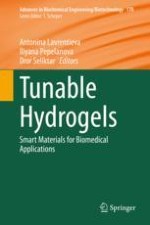2021 | OriginalPaper | Buchkapitel
Tunable Protein Hydrogels: Present State and Emerging Development
verfasst von : J. Nie, X. Zhang, W. Wang, J. Ren, A.-P. Zeng
Erschienen in: Tunable Hydrogels
Aktivieren Sie unsere intelligente Suche, um passende Fachinhalte oder Patente zu finden.
Wählen Sie Textabschnitte aus um mit Künstlicher Intelligenz passenden Patente zu finden. powered by
Markieren Sie Textabschnitte, um KI-gestützt weitere passende Inhalte zu finden. powered by
